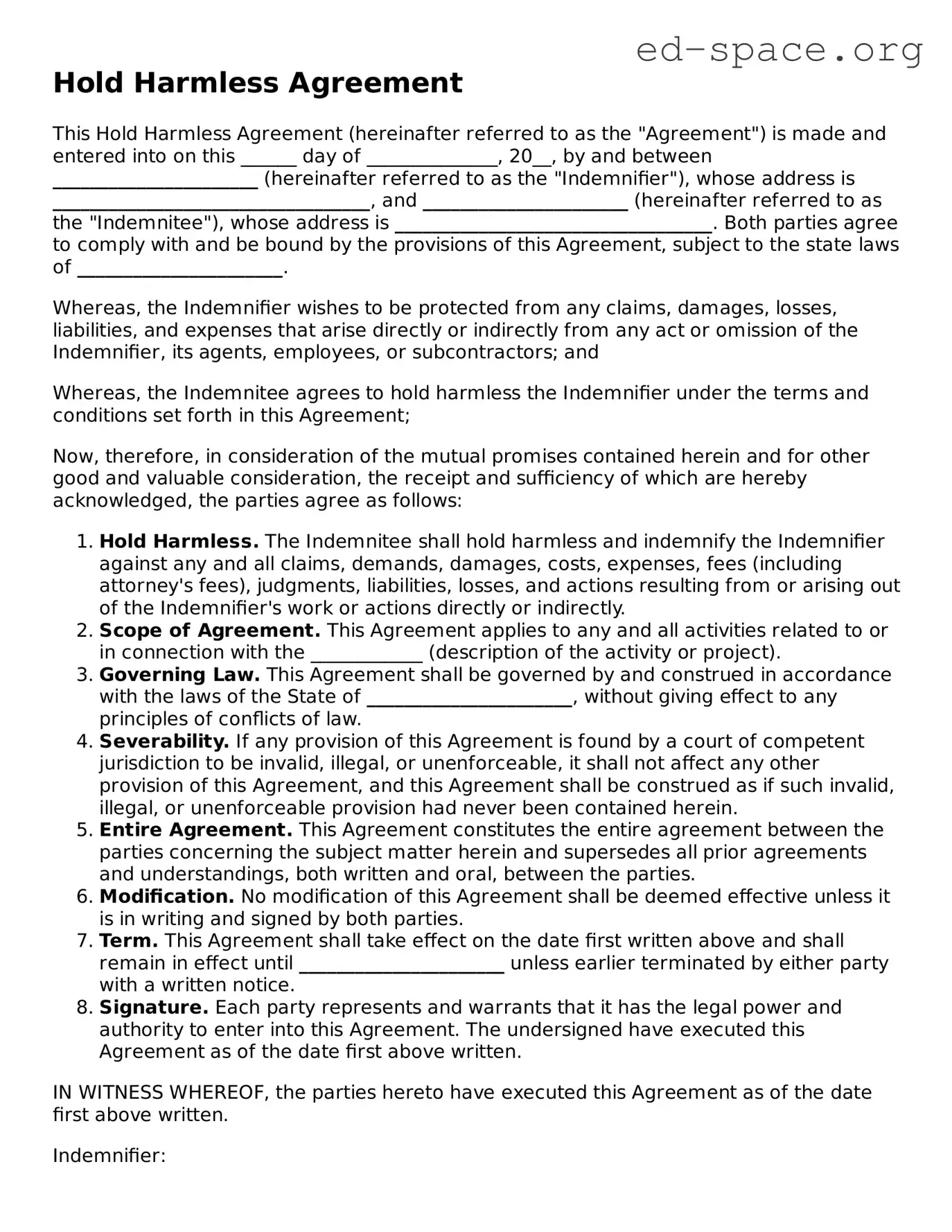What is a Hold Harmless Agreement?
A Hold Harmless Agreement is a legal document that one party uses to protect themselves from any liability or blame in the event of an accident or damage. This agreement means that one party agrees not to hold the other party responsible for any risk, liability, or loss that may occur during a specific activity or event.
When would I need to use a Hold Harmless Agreement?
These agreements are commonly used in situations where there is a potential for injury or damages. Examples include construction projects, special events like weddings or parties, and activities such as hiking or skydiving. Businesses often require these agreements when hiring contractors, to shield themselves from liability related to the contractor's work.
What are the main types of Hold Harmless Agreements?
There are generally three main types: a broad form, which shifts all liability to one party; an intermediate form, which holds a party liable only for their negligence; and a limited form, which only holds a party liable if they are solely responsible for the incident. The type used depends on the situation and the agreement between the parties involved.
Who needs to sign the Hold Harmless Agreement?
The person or entity being protected from liability (the indemnitee) and the person or entity agreeing to accept the liability (the indemnitor) must both sign the agreement. In some cases, witnesses or a notary public might also need to sign, adding an extra layer of legal protection.
Is a Hold Harmless Agreement enforceable in all states?
While most states recognize and enforce these agreements, the specifics can vary significantly from one state to another. Some states have restrictions on them, particularly regarding their use in consumer contracts or employment. It's important to understand the laws in your state or consult with a legal professional to ensure that your agreement is enforceable.
Can I write my own Hold Harmless Agreement?
Although it is possible to draft your own agreement, it's crucial to ensure that it meets all legal requirements of your state and includes all necessary terms to be enforceable. Consulting with a lawyer to either draft or review the agreement you have prepared is often the best practice, to ensure it will hold up in court if needed.
What should be included in a Hold Harmless Agreement?
A comprehensive Hold Harmless Agreement should include clear identification of both parties involved, a description of the activity or event being covered, the specific risks being disclaimed, the scope of the protection, and any exceptions to the agreement. It should also contain a clause that specifies the duration of the agreement.
Can a Hold Harmless Agreement be terminated?
Yes, but the agreement must include specific provisions for termination. This could mean setting an expiration date, allowing either party to terminate under certain conditions, or by mutual agreement of both parties. Without such provisions, ending the agreement becomes more complex.
Does a Hold Harmless Agreement cover all types of liability?
No, there are limits. Most agreements won't cover acts of gross negligence or intentional wrongful acts. The specifics can vary, but generally, there is an expectation that all parties will act in good faith to avoid harm. The agreement protects against accidents and unforeseen events, not intentional harm or extreme neglect.
